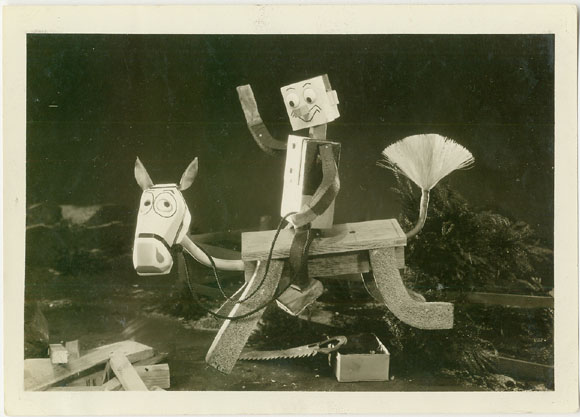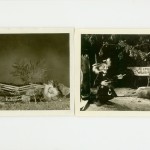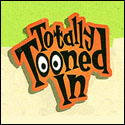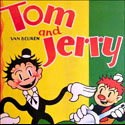
Chip the Wooden Man would fit perfectly in the Marvelous Land of Oz. However, he wasn’t an L. Frank Baum character, but was the creation of Kinex Studios of Hollywood, California. The studio, headed by Elmer and Frank Young, produced a series of stop-motion puppet film between 1927-1930 solely for sale to the home movie market. Hugh Harman and Rudolph Ising contributed stories to Kinex, and the films themselves have now garnered a cult following.
Tom Stathes posted this clip online (embed below), to give you a taste:
For more information on Kinex, read the essay by Stuart McKissick enclosed in liner notes booklet of the must-have Thunderbean dvd Stop-Motion Marvels. Animation art dealer Mike Van Eaton came into a cache of rare Kinex publicity photos. I’ve posted the ones from the Chip films below (if you like them, I have more stills from the other two Kinex series Snap, the Gingerbread Man and Daffy Doings in Doodlebugville, to post at another time). These still photos are delightful, and show how much detail and work went into these little films. Click thumbnails to enlarge.










 Jerry Beck is a writer, animation producer, college professor and author of more than 15 books on animation history. He is a former studio exec with Nickelodeon Movies and Disney, and has written for The Hollywood Reporter and Variety. He has curated cartoons for DVD and Blu-ray compilations and has lent his expertise to dozens of bonus documentaries and audio commentaries on such. Beck is currently on the faculty of CalArts in Valencia, UCLA in Westwood and Woodbury University in Burbank – teaching animation history. More about Jerry Beck [
Jerry Beck is a writer, animation producer, college professor and author of more than 15 books on animation history. He is a former studio exec with Nickelodeon Movies and Disney, and has written for The Hollywood Reporter and Variety. He has curated cartoons for DVD and Blu-ray compilations and has lent his expertise to dozens of bonus documentaries and audio commentaries on such. Beck is currently on the faculty of CalArts in Valencia, UCLA in Westwood and Woodbury University in Burbank – teaching animation history. More about Jerry Beck [








Hi, just curious, what “home movie market” existed in 1930? For people with film projectors at home? I know we aren’t talking about TV, correct?
The “home movie” market in the 1920s and early 30s was essentially for film enthusiasts and hobbyists who those owned a 16mm projector, usually silent.
“The “home movie” market in the 1920s and early 30s was essentially for film enthusiasts and hobbyists who those owned a 16mm projector, usually silent.”
It’s nice one existed at all for material like this to be around, and the people who made it happen.
And it’s largely responsible for some films, such as the Lon Chaney Hunchback of Notre Dame, existing at all today. Apparently all known copies derive from a 16mm show-at-home print.
Another interesting piece of history,though I’m wondering ,too,were home movie projectors affordable for average Americans back in the day?
Probably just as affordable as phonograph players, a decent one of which started around $100 (in 1930s money!). If that’s your hobby, that’s what you get.
Not to forget the use of making your own movies which is how the term “home movies” came about.
That clay dinosaur looked like it was intended to evoke GERTIE THE DINOSAUR!
To be fair, let’s give credit to Tom Stathes’ STOP MOTION MATINEE. His release included the CHIP films first .
Right you are, Ray… here’s the link to Tom’s DVD: http://cartoonsonfilm.com/dvd.html
It’s my understanding that 16mm sound projectors (and of course, 16mm optical sound-on-film prints) didn’t exist until 1934. Before that, all 16mm home movie prints and projectors were silent. Producing brand new silent films for the 16mm home movie market prior to 1934 must have made business sense.
By the way, I have several 100′ Chip and other Kinex titles- were they ever made longer than this length? The prints I have just don’t seem complete.
16mm silent projectors and film were available for home use by the late 1920s. I have some 16mm home movies my grandfather shot in 1929, and I still have his original camera and projector.
He also had some 16mm cartoons that he’d bought at the time, and one which we have is one of these Kinex films, featuring their other star, “Snap, the Gingerbread Boy,” who was sort of a proto-Gumby in the way he’d sometimes get “molded” into different shapes.
He might not be Baum’s ,but he does resemble the Woozy from ‘Patchwork Girl of Oz’:
http://images1.wikia.nocookie.net/__cb20120503235156/oz/images/2/26/Woozy.png
reminds me of the Gumby cartoons…
Does this STOP MOTION MARVELS disk exist at this time from Thunderbean? Are all the entries on that disk silent films?